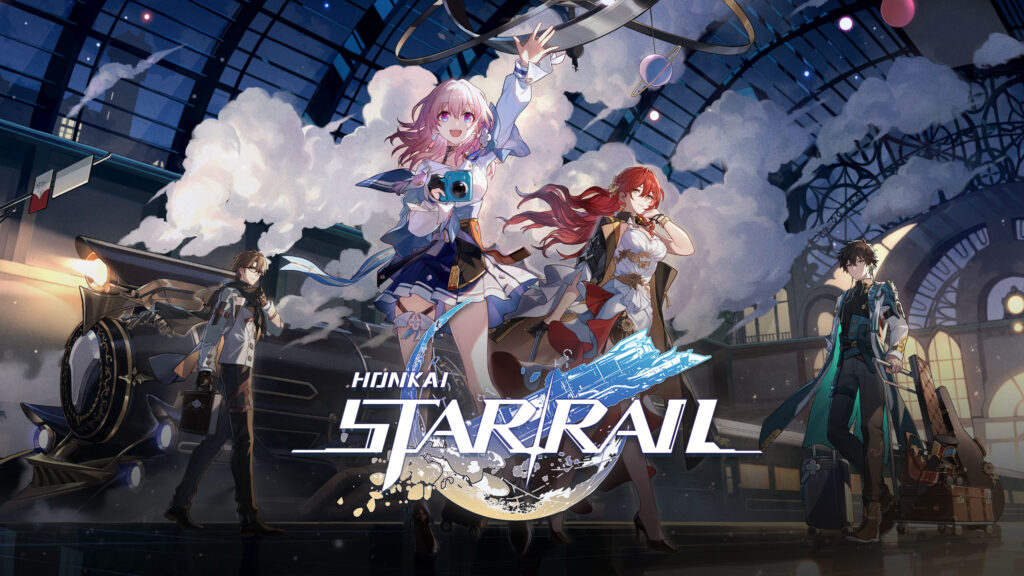Introduction
“Honkai: Star Rail,” developed by miHoYo, has captured the attention of many with its intricate world-building and engaging turn-based combat system. As a successor to the popular “Honkai Impact 3rd,” the game builds upon its predecessor’s success with a fresh take on the genre. However, one of the most contentious issues surrounding “Honkai: Star Rail” is its microtransaction system. While microtransactions are common in free-to-play games, “Honkai: Star Rail” has faced significant criticism for how these transactions affect gameplay, player experience, and the overall game economy. This article delves deeply into the specific issues related to microtransactions in “Honkai: Star Rail,” examining their impact on the game and the player base.
The Rise of Microtransactions in Gaming
Microtransactions have become a staple in modern gaming, providing a revenue stream for developers while offering players optional purchases. Initially, these transactions were limited to cosmetic items but have since expanded to include gameplay advantages, premium currencies, and more.
In “Honkai: Star Rail,” microtransactions are integral to the game’s economy. Players can purchase a variety of items, including premium currency, which is used to unlock new characters, weapons, and other in-game content. This system, while designed to enhance player experience, has led to several issues that warrant closer examination.
The Mechanics of Microtransactions in “Honkai: Star Rail”

In “Honkai: Star Rail,” microtransactions are primarily conducted through the purchase of a premium currency known as Stellarons. These Stellarons can be used to acquire characters, weapons, and special items, which can significantly impact gameplay.
Premium Currency System
Players can buy Stellarons with real money, which then allows them to perform “Pulls” or “Gacha” draws to obtain characters and items. This system creates a sense of anticipation and excitement but also introduces a level of randomness and luck into the game.
Impact on Progression
The reliance on Stellarons for character acquisition means that players can either spend time grinding or opt to spend money to expedite their progress. This dichotomy can lead to a feeling of imbalance, where players who spend money have a distinct advantage over those who do not.
The Psychological Impact of Gacha Mechanics

Gacha mechanics are a central feature in “Honkai: Star Rail,” drawing from traditional Japanese capsule-toy vending machines. While this system can be thrilling, it also has psychological implications that impact player behavior and spending.
Understanding Gacha Mechanics
The Gacha system in “Honkai: Star Rail” operates on a randomized reward basis, where players use their Stellarons to unlock characters or items with varying rarity. This randomness can lead to a phenomenon known as “gambling-like behavior,” where players continue to spend money in hopes of obtaining rare items.
Emotional and Financial Impact
The emotional highs and lows associated with Gacha pulls can lead to compulsive spending, as players chase after their desired characters or items. This can result in significant financial expenditure, impacting players’ budgets and overall satisfaction with the game.
Balancing Free-to-Play and Pay-to-Win Elements
One of the core issues with microtransactions in “Honkai: Star Rail” is the balance between free-to-play (F2P) and pay-to-win (P2W) elements. This balance is crucial for maintaining a fair and enjoyable experience for all players.
F2P vs. P2W Dynamics
In a well-balanced game, free-to-play players should be able to progress and enjoy the game without feeling pressured to spend money. However, when pay-to-win elements become too pronounced, it can create a divide between players who spend money and those who do not.
Community Feedback on Balance
Feedback from the community often highlights concerns about the perceived advantage that paying players have over free-to-play individuals. This imbalance can lead to frustration and a sense of unfairness, impacting the overall enjoyment of the game.
The Role of Limited-Time Events and Offers
Limited-time events and offers are a common tactic used in “Honkai: Star Rail” to encourage spending. These events often feature exclusive characters or items that are only available for a short period.
Exclusive Content and Scarcity
By creating a sense of urgency around limited-time offers, the game aims to drive spending and engagement. Players may feel compelled to spend money to obtain exclusive content, which can lead to increased financial expenditure.
Impact on Player Behavior
The pressure to participate in limited-time events can lead to rushed decisions and impulsive spending. This can create a cycle where players continually spend money to keep up with the game’s evolving content and offers.
Long-Term Effects on Game Economy
The microtransaction system in “Honkai: Star Rail” has broader implications for the game’s economy. Understanding these effects is crucial for assessing the sustainability and health of the game.
Inflation of In-Game Currency
As players spend money to acquire premium currency, the value of in-game currency can become inflated. This can lead to an imbalance in the game’s economy, where the cost of items and characters becomes skewed.
Player Retention and Spending
The impact of microtransactions on player retention is also significant. Players who feel that they need to spend money to progress may be more likely to leave the game if they do not see a reasonable return on their investment.
Developers’ Strategies for Addressing Microtransaction Issues
In response to concerns about microtransactions, developers often implement strategies to address player feedback and improve the system.
Transparency and Communication
One approach is increasing transparency around the microtransaction system. Developers can provide clear information about odds, costs, and the value of in-game purchases to help players make informed decisions.
Adjustments to Mechanics
Developers may also make adjustments to the Gacha system or offer alternative ways to earn premium currency. These changes can help balance the experience and reduce the impact of microtransactions on gameplay.
Future Directions for Microtransactions in Gaming
As the gaming industry continues to evolve, the role of microtransactions is likely to change. Exploring potential future directions can provide insight into how these systems might be improved.
Innovative Monetization Models
Future monetization models may focus on enhancing player experience without creating a pay-to-win environment. This could involve offering more value through non-randomized purchases or subscription-based models.
Player-Centric Approaches
A shift towards player-centric approaches that prioritize fairness and transparency could help address many of the issues associated with microtransactions. By focusing on player feedback and needs, developers can create more balanced and enjoyable experiences.
Conclusion
Microtransactions are a defining feature of “Honkai: Star Rail,” but they come with significant challenges and controversies. The issues related to Gacha mechanics, balance between free-to-play and pay-to-win elements, and the impact on player behavior and game economy highlight the complexity of integrating microtransactions into a game. As the industry moves forward, addressing these challenges with transparency, balanced mechanics, and innovative approaches will be crucial for creating fair and engaging experiences for all players. The ongoing dialogue between developers and the community will play a vital role in shaping the future of microtransactions in gaming.


